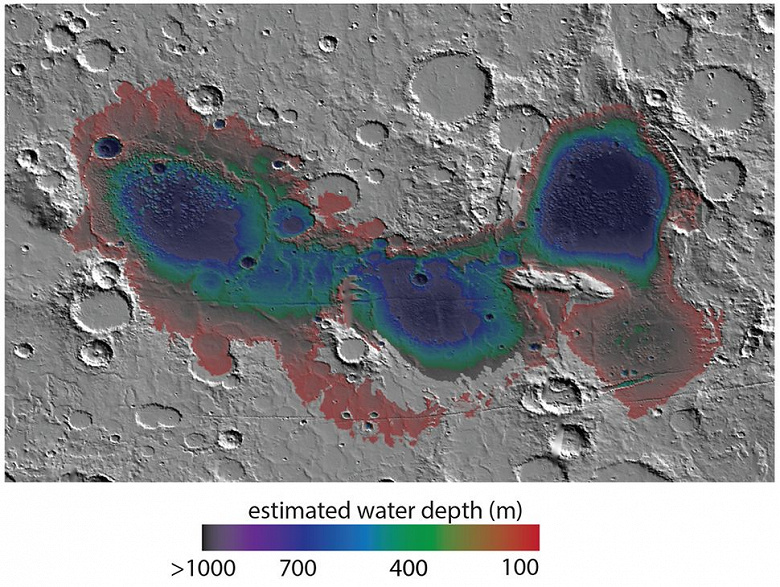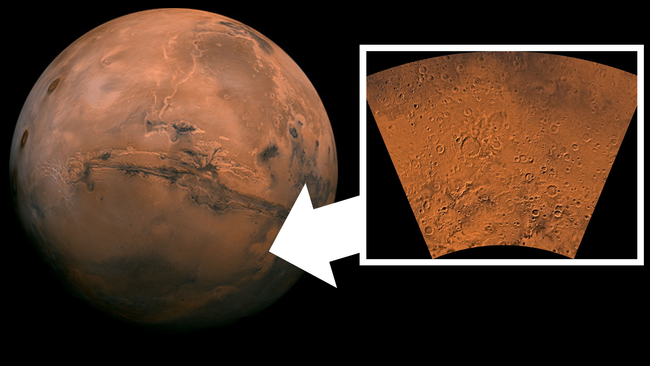The discovery of volcanic springs near Lake Eridania gives hope for the search for traces of ancient life on Mars
Planetary scientists have made a discovery that could change our understanding of early Mars. It turns out that it was much more active volcanically and tectonically than previously thought. Evidence of such activity, which occurred 4 billion years ago, were 63 new examples of volcanoes discovered in the Eridania region, located in the southern hemisphere of the planet. Such a discovery could be important for the search for ancient life on Mars, because volcanic springs near the lake could create conditions for the development of life.
«The large basins of this region were once home to a system of lakes known as paleolake Eridania, which was about one and a half kilometers deep. Volcanic springs near abundant water could feed hydrothermal systems, which in turn could support the development of life», — said team member and planetary geologist from the Planetary Science Institute Aster Cowart.
Unlike Earth, modern Mars shows almost no volcanic or tectonic activity. On Earth, plate tectonics, which moves layers of the crust, is responsible for this. On Mars these processes are not so developed.
For the new study, the team used data collected by the Mars Global Surveyor, Mars Odyssey and Mars Reconnaissance Orbiter spacecraft. The analysis showed that in the studied region there are 63 examples of different types of volcanoes, such as volcanic domes, stratovolcanoes, pyroclastic shields and caldera complexes.
«Gamma-ray spectroscopy shows that this is a region of crust with a particularly distinctive composition, gravity data has shown that it is generally less dense and thicker than the rest of the Martian crust, and magnetic data shows that that this is a highly magnetized area of the crust», — Cowart explained. Scientists suggest that Eridania hides hundreds of other examples of volcanic activity that occurred about 3.5 billion years ago. They also believe that some of the diversity of volcanic activity observed in this area may be found in other parts of Mars.
The type of geological activity observed on Mars in this study — This is vertical tectonics, in which the surface layer moves upward. This was a precursor to the full plate tectonics seen on Earth today. The crustal changes behind such newly discovered volcanic formations are similar to the stage that occurred on Earth in the evolutionary path to plate tectonics more than 2.5 billion years ago.

Before the advent of plate tectonics, the composition of the crust was more homogeneous and rigid. However, the process of water penetrating into the deeper layers of the crust began to cause mineral transformations that made the deep crust more dense. With the gradual penetration of water, much of the Earth's lower crust began to sink down into the mantle, a process called sagduction. As a result, water-rich minerals formed near the surface sank deeper, where they contributed to the formation of buoyant magma. This magma caused other areas of the crust to rise upward. Thus, large depressions, mountain ranges and volcanic rocks with a specific chemical composition found their place in the landscape. The same evidence was found on Mars.
This discovery not only allows us to study the period of geological history of our planet, but also may help determine how life on Earth originated. The processes behind the formation of such features on Mars may be similar to scenarios for the origin of life around underwater hot springs, where mineral-rich seawater seeps from cracks into the ocean crust.
In addition, the research may influence the search for signs of ancient life conducted by the Curiosity and Perseverance rovers.

